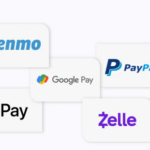About Equilibrium Ico
Equilibrium is the first interoperable DeFi conglomerate — it is comprised of a comprehensive lending platform and a professional-grade cross-chain DEX.
- About Equilibrium Ico
| ICO | DETAILS |
|---|---|
| Company Name | Equilibrium |
| Token Symbol | EQ |
| Token For Sale | 720,000,000 EQ |
| Ico Price | N/A |
| Fundraising Goal | TBA |
| Personal Cap | 500 USDc – 25 000 USDC |
| Accept | BTC/BCH/ETH/WBTC/DOGE/LTC/SHIB/GUSD/USDC/USDP/DAI/BUSD |
| Access | Public |
| Langugae | English |
| Total Supply | 6% |
| Whitepaper | Click Here To View |
| Website | Homepage |
EQ Utility token
EQ enables the community governance of Equilibrium. It can be used for transaction fees, product fees, and platform liquidity on Equilibrium.
Key features
Governance token
EQ holders have a say in system changes and EQ-weighted votings
Platform currency
Users pay transaction fees for operations on Equilibrium Ico Substrate and product fees in EQ,
Bailout liquidity
Liquidity providers can earn yield by locking EQ in Equilibrium’s liquidity pools
Staking opportunities
EQ holders receive rewards on their tokens staked to Equilibrium’s governance.
EQ is the native utility token that is used for:
- Collateral pledge for borrowing stablecoins and crypto assets
- Bailout liquidity
- Liquidity farming
- Paying system fees
- Accessing system governance
How Many EQ Tokens Are There in Circulation?
The total supply is 12 billion EQ tokens, fully compatible across every smart-contract enabled blockchain bridged with Polkadot. Based on the token release schedule there will be ~ 7% of the total supply circulating after the parachain onboarding. According to our launch roadmap, this is planned for June.
Who Are the Founders of Equilibrium?
Alex Melikhov is the founder and CEO of Equilibrium. Alex is an engineer in applied mathematics by training. Before blockchain, he was working on fintech projects.
Equilibrium Ico current team has been working together since 2017 building on Ethereum back in the day. In 2018, the team kicked off the development on EOS. In April 2019 the team launched the first decentralized EOS-based stablecoin as the first product of the Equilibrium’s product line, called EOSDT. Today EOSDT is the most liquid decentralized stablecoin and the biggest DeFi project on EOS, with over $14 million of total value locked in our smart contracts, and over 1,000 user positions generated.
Now the team is developing on Polkadot to obtain true cross-chain interoperability and to turn Equilibrium into a full-fledged DeFi one-stop shop.
Why is Equilibrium unique?
Other than the fact that Equilibrium focuses on cross-chain functionality from the outset, it is the first DeFi conglomerate that is designed to deliver a unique user experience and to end market fragmentation.
Equilibrium is based on a unique and innovative architecture and doesn’t replicate any of existing DeFI concepts and makes the system way more stable. Here are core components that implement this architecture and set Equilibrium apart from other DeFi projects:
A unique risk management system
This monitors the overall system liquidity in real-time across blockchains, starting from individual users’ multi-asset portfolios and aggregating them to follow overall system solvency. It’s constantly assessing system portfolio volatility, conditions of the bailout liquidity pool that is securing loans in the system, and risk profiles of particular user positions.
Programmatic interest rate
Most DeFi lending applications either follow asset utilization or set interest via governance mechanisms. Equilibrium is the first DeFi project that takes a risk-based approach to borrowing cost assessment that is inherited from traditional finance. Practically it means that borrowers can enjoy flexible interest rates that can be adjusted by providing less volatile collateral or setting higher collateralization levels.
Bailouts are a proactive solution to bad debt
Most DeFi projects liquidate a debt by way of auctions, but this isn’t as active and reliable a solution as it should be. That’s why Equilibrium has introduced the bailout mechanism and the associated user role of bailsman who provide liquidity to the bailout pool and efficiently secure loans in the system. In case of liquidations there are no forced auctions needed as debt obligations are simply transferred from defaulted borrowers to balsmen. So it doesn’t matter where the market is going.








